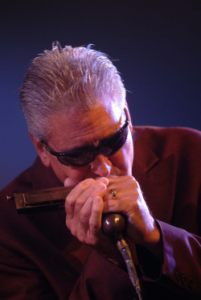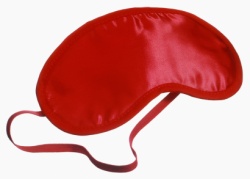Together with accuracy, this is an essential foundation skill for any aspiring harmonica player. The principle steps to good tone are these:
- Controlled breathing
- A moist and airtight seal
- Accurate single notes
- Tongue in neutral
- Open mouth cavity
- Open vocal tract
- Work from the diaphragm
Breath control
This is neither table football, nor a MacDonald’s milkshake. Lose the straw and stop trying so hard, or else you’re going to burst a blood vessel. Inhale and exhale gently.
 Airtight seal
Airtight seal
Playing off the harmonica, or addressing it politely will result in a peripheral hissing sound. This means you have a gas leak! For the benefit of society, you need to sort this out as quickly as possible. Lick your lips and get intimate – just like you, your harp loves a kiss and a cuddle.
Adjust your embouchure so no air escapes. Ensure everything is passing through the instrument. This means pushing the harp between supportive but not rigid lips. If you are tense and your lips are too firm it ain’t gonna happen. Relax a little. We sometimes call the harp a blues burger or a tin sandwich. Don’t be afraid to chomp that thing. Close your eyes and schmooze your harp.
Accurate single notes
When working on tone, you need to focus on playing clean individual notes, free from interferance. Once you can do this on your first hole, you’re ready to carry the process to the next one. By learning simple tunes – nursery rhymes even – you will quickly coach yourself towards accuracy.
Often when we start learning harp, through lack of emouchure, we activate more than one hole at a time. It’s the Bob Dylan effect. You instantly limit the amount of tone you can produce because you’re spreading yourself too thinly. It’s a big old gas leak. So narrow things down and give yourself a break.
 Don’t put up with cheap imitations. If it sounds like a car horn, you’re catching too many holes. If it sounds clean you’re where you need to be. Use your ears and listen to what’s going on. Incidentally, in order to locate the note you want, don’t be afraid to use the tip of your tongue to count up from 1 or down from 10. It’s a legitimate process. Get sloppy. Your harp enjoys intimacy remember.
Don’t put up with cheap imitations. If it sounds like a car horn, you’re catching too many holes. If it sounds clean you’re where you need to be. Use your ears and listen to what’s going on. Incidentally, in order to locate the note you want, don’t be afraid to use the tip of your tongue to count up from 1 or down from 10. It’s a legitimate process. Get sloppy. Your harp enjoys intimacy remember.
Narrow tone – the letterbox effect
When you first latch onto a note, you’re tongue will most likely be front of house (near your teeth). This gives you the narrow tone we call the letterbox effect. Being British we can. It’s a sound you’ll hear Sonny Terry, Kim Wilson and Sonny Boy Williamson II use from time to time. So there is a place for it. It’s kind of metallic in thin. But now we want to build it and find that big sound. We’re chasing the Harp Surgery’s best friend – Fat Tone; he’s our Pizza man.
Tongue in neutral
For the biggest tone, you don’t want your tongue near the harmonica. Simply relaxing your tongue, leaving it off the harmonica and resting it will open up the mouth cavity enough for a significant change in the sound you’re producing. Let your tongue fall away and start to pull or push from backstage (vocal tract). On the lower draw notes especially, if your tongue is in the mix, there’s a strong chance the note you need will sound flat. This is because you’re telling the reed you want it to bend. Let it go, back off and draw (or blow) softly from the diaphragm. Breath through the harp.
Hot Potato (or Hard Boiled Egg)
 This is the next important concept to take on board. You need an open mouth cavity and vocal tract. So imagine you have a hard boiled egg, or a hot new potato, in your mouth as you play. Resist the temptation of bringing your tongue into the equation. Pretend to yawn. That’s where your tongue should be. Otherwise try speaking like Mr Bean for a while.
This is the next important concept to take on board. You need an open mouth cavity and vocal tract. So imagine you have a hard boiled egg, or a hot new potato, in your mouth as you play. Resist the temptation of bringing your tongue into the equation. Pretend to yawn. That’s where your tongue should be. Otherwise try speaking like Mr Bean for a while.
Diaphragm, diaphragm, diaphragm
Blow notes – Push from your chest but support the airflow from your diaphragm. Once a clear note is achieved, let your tongue fall back. Open up the throat as if yawning and push a little more from the chest. You should notice greater depth in the resonance and warmth of the note. This is tone!
Draw notes: Once you start to draw and achieve a note, DO NOT manipulate with your jaw, lips or the front end of your tongue. It’s going to bend the reed and we don’t want this yet. Instead, pull from your chest and diaphragm. Now try again. Breath inward across the reed. Pull from your chest and diaphragm – but resist manipulating from the ‘front end’. Let air in through your nose initially if it helps balance the pressure on the reed and correct any bending – you will hear the pitch alter. Continue to pull from chest. Let your tongue loosen and fall comfortably as far back as possible.
Open up the throat as if yawning. Pull more from the chest. You should notice greater depth in the resonance and warmth of the note. This is tone! Still not there yet? Whistle a low note or pretend to yawn. This is where your jaw, tongue and throat need to be positioned for the best resonance and fullest tone.
Conclusion
 If you can’t hear it yet, go back to the start and work through again. It’s worth it. Playing one note with the best possible tone beats loads of weak notes every time. Think cricket or baseball. Listen to the sound you’re making and find the meat of the bat. The sweet spot. You know when you’ve found it because it will ring in your ears and fill the room. You will hear a full, rounded and, above all, warm sound quality.
If you can’t hear it yet, go back to the start and work through again. It’s worth it. Playing one note with the best possible tone beats loads of weak notes every time. Think cricket or baseball. Listen to the sound you’re making and find the meat of the bat. The sweet spot. You know when you’ve found it because it will ring in your ears and fill the room. You will hear a full, rounded and, above all, warm sound quality.
Post script
Don’t confuse tone with volume. Tone applies to any note, quiet or loud!


No comments:
Post a Comment